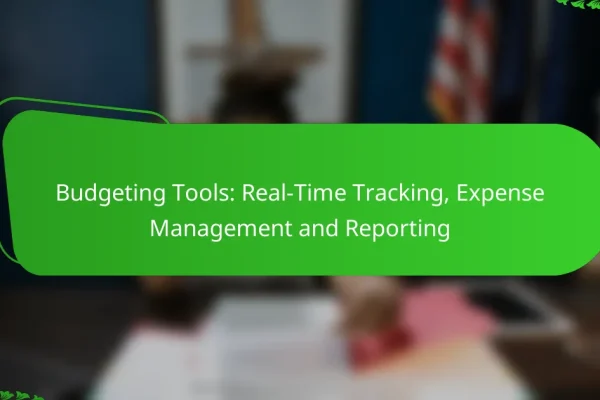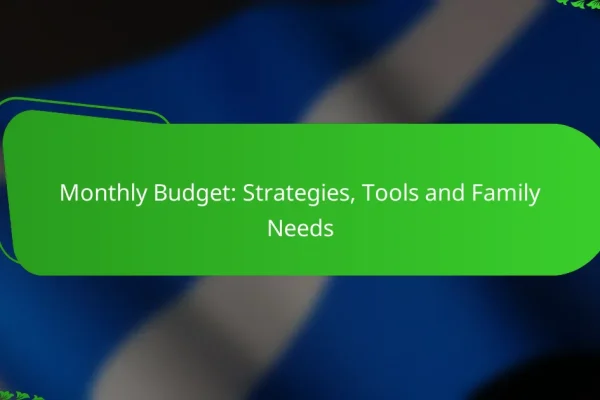What are effective budgeting techniques for financial management?
Effective budgeting techniques help individuals and organizations manage their finances by allocating resources efficiently. These methods provide structured approaches to tracking income and expenses, ensuring financial goals are met.
Zero-based budgeting
Zero-based budgeting requires you to start from a “zero base” each budgeting period, justifying every expense anew. This method encourages careful evaluation of all costs, ensuring that only necessary expenses are included.
To implement zero-based budgeting, list all expenses and categorize them as essential or non-essential. This approach can lead to significant savings, as it often reveals unnecessary expenditures that can be eliminated.
50/30/20 rule
The 50/30/20 rule is a straightforward budgeting technique that divides your after-tax income into three categories: 50% for needs, 30% for wants, and 20% for savings and debt repayment. This method simplifies financial planning by providing clear guidelines on spending and saving.
For example, if your monthly income is $3,000, allocate $1,500 for needs (like housing and groceries), $900 for wants (like dining out and entertainment), and $600 for savings or debt repayment. This balance helps maintain financial health while allowing for some discretionary spending.
Envelope system
The envelope system is a cash-based budgeting method where you allocate cash for different spending categories into separate envelopes. Once the cash in an envelope is gone, you cannot spend any more in that category for the month.
This technique is particularly useful for controlling discretionary spending, such as dining out or entertainment. By physically separating cash, you can visually track your spending and avoid overspending in any category.
Pay-yourself-first method
The pay-yourself-first method prioritizes savings by treating it as a non-negotiable expense. Before paying bills or spending on discretionary items, set aside a predetermined amount for savings or investments.
For instance, if you decide to save 15% of your income, automatically transfer that amount to a savings account as soon as you receive your paycheck. This approach helps build savings consistently and can lead to financial security over time.
Incremental budgeting
Incremental budgeting involves adjusting the previous year’s budget based on expected changes in revenue and expenses. This method is often used by organizations to maintain stability while planning for growth or reductions.
When using incremental budgeting, consider factors like inflation, changes in demand, or new projects. While this method is straightforward, it may not encourage innovation or cost-cutting, as it often assumes past budgets are a good baseline.
How can I implement budgeting techniques in the United States?
Implementing budgeting techniques in the United States involves using tools and resources that help track income and expenses effectively. By adopting practical methods, individuals can gain better control over their finances and work towards their financial goals.
Use budgeting apps like Mint
Budgeting apps such as Mint provide a user-friendly platform to manage your finances. These apps allow you to link your bank accounts, categorize spending, and set financial goals, making it easier to track your budget in real-time.
When using Mint, you can set up alerts for bill payments and spending limits, helping you stay on top of your financial commitments. Many users find that visual representations of their spending habits motivate them to stick to their budgets.
Attend financial workshops
Attending financial workshops can enhance your understanding of budgeting techniques and financial management. These workshops often cover topics like debt reduction, investment strategies, and savings plans, providing valuable insights from financial experts.
Look for workshops offered by local community centers, libraries, or financial institutions. Many of these sessions are free or low-cost, making them accessible to a wide audience. Engaging with others in a workshop setting can also provide support and accountability in your budgeting journey.
What are the benefits of budgeting techniques?
Budgeting techniques offer numerous benefits, including enhanced control over finances and improved decision-making. By implementing these strategies, individuals can better understand their income and expenses, leading to more informed financial choices.
Improved financial awareness
Improved financial awareness is a key advantage of budgeting techniques. By tracking income and expenses, individuals gain insights into their spending habits and financial health. This awareness helps identify unnecessary expenditures and areas for potential savings.
For instance, using a budgeting app can provide a clear overview of monthly spending patterns, allowing users to adjust their habits accordingly. Regularly reviewing financial statements can also enhance this awareness, making it easier to spot trends and make proactive changes.
Better savings habits
Better savings habits are a direct result of effective budgeting. When individuals allocate specific amounts for savings within their budgets, they are more likely to prioritize saving over impulsive spending. This structured approach can lead to building an emergency fund or saving for future goals.
Setting realistic savings goals, such as saving 10-20% of monthly income, can create a habit of consistent saving. Automating transfers to savings accounts can further reinforce this habit, ensuring that savings are prioritized before other expenses.
Debt reduction
Debt reduction is another significant benefit of employing budgeting techniques. By understanding their financial situation, individuals can create a plan to pay down debts systematically. This often involves allocating extra funds from their budget towards high-interest debts first.
For example, using the snowball method, where smaller debts are paid off first to build momentum, can be effective. Alternatively, the avalanche method focuses on paying off debts with the highest interest rates first. Both strategies require clear budgeting to ensure that sufficient funds are available for debt repayment each month.
What criteria should I consider when choosing a budgeting technique?
When selecting a budgeting technique, consider your personal financial goals, the stability of your income, and your spending habits. These factors will help you determine which method aligns best with your financial situation and objectives.
Personal financial goals
Your personal financial goals are crucial in choosing a budgeting technique. Whether you aim to save for a house, pay off debt, or build an emergency fund, your goals will dictate how you allocate your resources. For instance, if your priority is saving for retirement, a percentage-based budgeting method may be beneficial.
Define your short-term and long-term goals clearly. This clarity will guide your budgeting decisions and help you stay focused on what truly matters to you.
Income stability
The stability of your income plays a significant role in determining the right budgeting technique. If you have a steady paycheck, traditional methods like the envelope system or zero-based budgeting may work well. However, if your income fluctuates, consider a more flexible approach, such as the 50/30/20 rule, which allows for adjustments based on your earnings.
Evaluate your income sources and their reliability. Knowing whether your income is fixed or variable will help you choose a budgeting method that accommodates your financial reality.
Spending habits
Your spending habits are essential to consider when selecting a budgeting technique. Analyze your past expenditures to identify patterns and areas where you can cut back. Techniques like the cash envelope system can help curb overspending by limiting how much you can spend in specific categories.
Be honest about your spending tendencies. If you tend to overspend on non-essentials, a stricter budgeting method may be necessary. Conversely, if you are disciplined, you might opt for a more relaxed approach that allows for some discretionary spending.
How do I track my budget effectively?
To track your budget effectively, start by recording all income and expenses consistently. Use tools that suit your preferences, whether digital or manual, to ensure you have a clear view of your financial situation.
Use spreadsheets for tracking
Spreadsheets are a powerful tool for budget tracking, allowing you to organize your financial data systematically. You can create categories for income, fixed expenses, variable expenses, and savings, making it easier to analyze your spending patterns.
Consider using formulas to automate calculations, such as summing total expenses or calculating remaining budget. This can save time and reduce errors compared to manual calculations. Popular spreadsheet software like Microsoft Excel or Google Sheets offers templates that can help you get started quickly.
When using spreadsheets, regularly update your entries to maintain accuracy. Set aside time weekly or monthly to review your budget, ensuring you stay on track and make adjustments as necessary. Avoid common pitfalls like neglecting to include small purchases, as these can add up over time and skew your budget.












